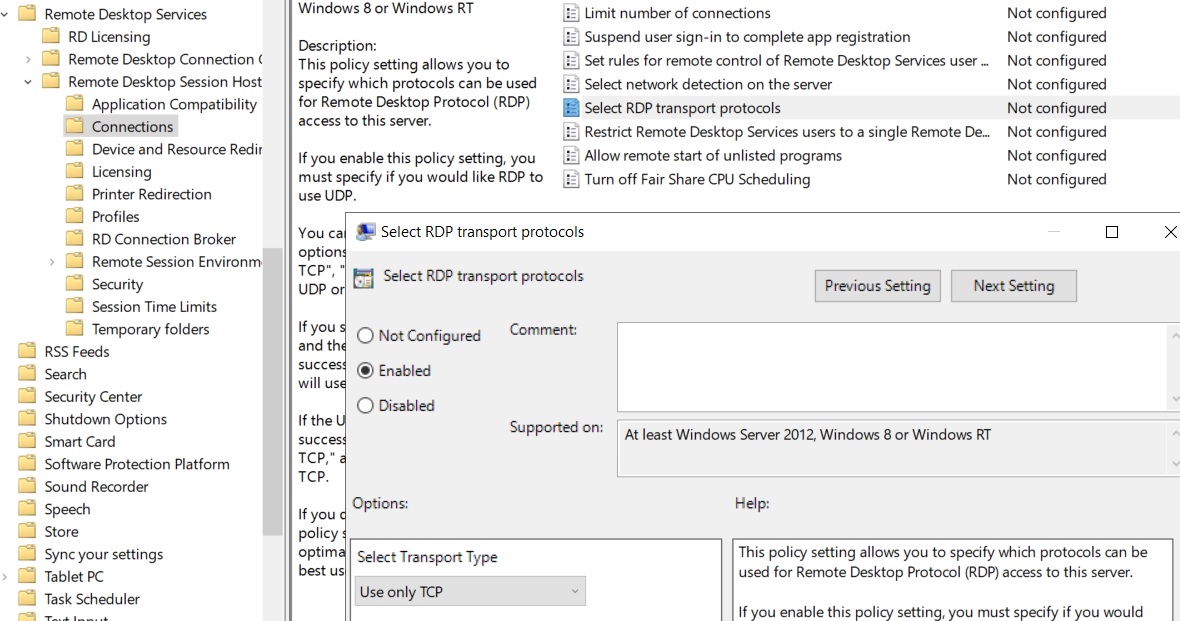How to Fix the Annoying RDP Screen Freeze (When It's Not Actually Disconnected)
It's one of the most frustrating issues for any administrator: you are connected to your Windows Server via Remote Desktop (RDP), and suddenly, the screen freezes.
The connection isn't actually lost. You might disconnect, reconnect, and discover that all the clicks and keyboard strokes you made "blindly" have actually registered.
If this sounds familiar, you're not alone. The good news is, there is a very simple and permanent fix.
The Cause: RDP Trying to Use UDP
By default, modern Windows operating systems (Windows Server 2016/2019/2022, Windows 10/11) try to use the UDP (User Datagram Protocol) for RDP connections. UDP is very fast and can make the session feel more fluid and responsive, which is why it's used for video streaming.
However, UDP has zero tolerance for packet loss.
The instant your internet connection has a minor hiccup or a small amount of packet loss (which is very common on long-distance or wireless connections), the UDP stream breaks. This causes your RDP display to freeze, even while your TCP-based commands (like mouse clicks and keyboard input) are still getting through.
The solution is to force your server to only use the older, more reliable TCP protocol, which is designed to handle packet loss gracefully.
The Solution: Forcing RDP to Use "TCP Only" via Group Policy
The cleanest and safest way to apply this fix is through the server's Local Group Policy Editor.
- On your server, press the Start button (or
Windows Key + R) and type gpedit.msc, then press Enter.
- In the Local Group Policy Editor, navigate to the following path in the left-hand menu:
Computer Configuration > Administrative Templates > Windows Components > Remote Desktop Services > Remote Desktop Session Host > Connections
- In the main window on the right, find and double-click the policy named "Select RDP Transport Protocols".
- A new window will open. By default, it is set to "Not Configured".
- Select "Enabled".
- In the "Options" box below, change the "Transport Type" dropdown menu to "Use only TCP".
- Click "Apply" and then "OK".
Final Step: Applying the Change
To ensure the new policy takes effect, you should restart your server. In some cases, running gpupdate /force from an administrative Command Prompt may be sufficient, but a reboot is the most reliable way.
Once this is done, your RDP connection will be forced over TCP. It might feel infinitesimally slower in a "perfect" connection, but it will be rock-solid and stable, and it will no longer freeze during minor packet loss.
A stable management experience starts with a stable network. At Erkmenhost, we provide high-performance Dedicated Servers and VPS solutions built on OVH's robust, Anti-DDoS protected network. Explore our server locations in France, Germany, and Poland for a rock-solid foundation for your business.


